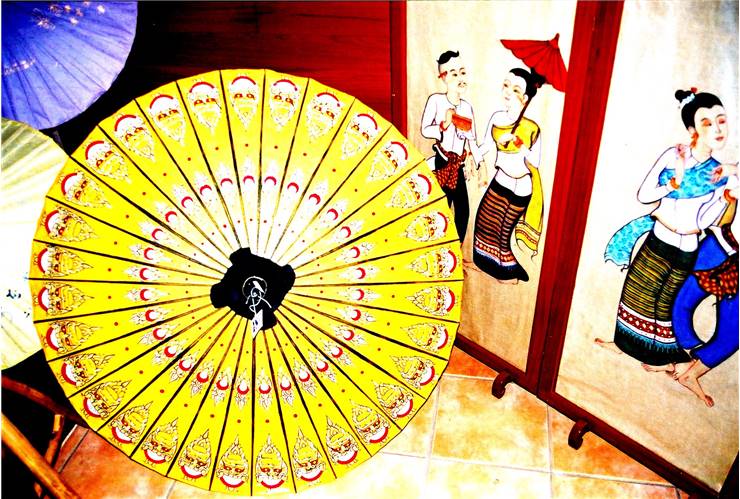History of Umbrella - Who Invented Umbrella?
As the human race exited Stone Age, advancements in technology and culture enabled our ancestors to improve their lifestyle, change environment around them and expand. One of the tools that enabled them to live more easily and comfortably was umbrella and parasol, which slowly managed to evolve from exclusive use by wealthy and royalty to one of the most commonly used objects in the modern world. As one of the most efficient means of protecting the person from sun and rain, umbrellas received countless upgrades over the millennia's.
The first recorded use of sun protecting parasol comes from Ancient Egypt, over 3500 years ago. Initially used with simple configurations of palm leaves attached to a stick, Egyptian parasols soon evolved into an object that was used by nobles, religious leaders and royalty. In those times, umbrellas were seen as a sign of ran and nobles enforced a culture of pale skin that was untouched by sun. Several hieroglyphic paintings found in ancient Egyptian ruins depicted the life of royalty and gods, which all had parasols over their heads. Neighboring kingdom of Assyria practiced tradition where only the kings had the right of being protected with elaborate made parasols.

Because of desert like environment of northern Africa and Middle East, Egyptian and Assyrians never found a need to waterproof their parasols and create umbrellas. This invention however happened in China in 11th century BC, where first silk and waterproof umbrellas started being used by nobility and royalty. As a sign of power influential people carried multi-tiered umbrellas, with Chinese Emperor himself being protected with four tiers of very elaborate parasol. Similar tradition spread across the region, and rulers of Siam and Burma used parasols with eight to 24 layers.
During 1st millennia BC, umbrellas came to Ancient Greece and Rome where they were viewed as a luxurious female accessory. It was recorded that both Greek and Roman women had umbrellas that could open and close, and were often carried not by noble women but by slaves and servants, sometimes mounted on horses or carriages. Men however, viewed umbrellas as female only item and only effeminate Roman men openly joined women under the protective shade of umbrella.
After the fall of Roman Empire in 5th century AD, use of umbrella almost totally disappeared from Europe. It was only with the arrival of Renaissance that umbrella returned into popularity, most commonly by the nobility and royalty in late 16thand 17thcentury France, Italy and England (probably under the influence of China). By that time umbrellas were made from silk and other expensive materials that did not provide lasting protection from rain, but their general shape and design (reinforced with modern technology that enabled easier opening and closing) closely resembled those that were used by Roman and Greece women in 4th century BC.
As the centuries went, umbrellas slowly spread across entire Europe and after "Age of Discovery" over to the Northern America, but tradition of female use continued to be strong until mid-18th century. This finally changed when the will of Jonas Hanway, founder of English Magdalen Hospital, dared to appear in public carrying an umbrella in almost all occasions. Openly ridiculed at first, male population of England finally accepted the use of umbrella by 1790s when many more reinforced and heavier umbrellas started being made and advertised. As the decades went on, umbrellas slowly become accepted by everyone as general item and technical advancements enabled creation of modern day umbrella. Most notable inventions that shaped umbrella into modern state were Hans Haupt's introduction of pocket umbrellas in 1928, and 1969 Bradford E Phillips' introduction of modern folding mechanism. Umbrellas even found their way into religious ceremonies of Catholic Church (as a part of part of the papal regalia) and oriental Orthodox Churches where umbrellas are used to honor important person or holy object.
Advancements of umbrella technology and manufacture continue to be refined to this day, with many patents being submitted on every year (for example umbrella design that can withstand storm winds of up to 100km/h and can't be turned inside out). As of 2008, majority modern of umbrella production comes from several provinces of China which are home to thousands umbrella companies.
